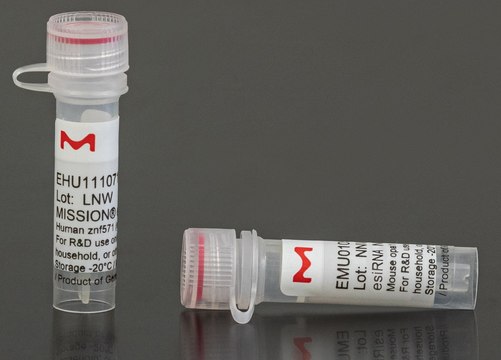19399
Nitric acid/Dipicolinic acid concentrate
HNO3 17 mM and Dipicolinic acid 17 mM in water, IC eluent concentrate (10x) for Metrosep C 6
About This Item
Quality Level
quality
HNO3 17 mM and Dipicolinic acid 17 mM in water
shelf life
limited shelf life, expiry date on the label
concentration
17 mM Dipicolinic acid in H2O
17 mM HNO3 in H2O
technique(s)
ion chromatography: suitable
Related Categories
1 of 4
This Item | EHU028371 | EHU009861 | EHU055321 |
|---|---|---|---|
| Ensembl | human accession no. | Ensembl | human accession no. | Ensembl | human accession no. | Ensembl | human accession no. |
| Gene Information human ... MGRN1(23295), MGRN1(23295) | Gene Information human ... DDHD2(23259), DDHD2(23259) | Gene Information human ... MDN1(23195), MDN1(23195) | Gene Information human ... ACSBG1(23205), ACSBG1(23205) |
| esiRNA cDNA target sequence ACCATCTACTGCCAGGCATCGGAGGAGTTCCTGAACGGCAGGGCAGTATACAGCCCCAAGAGCCCCTCGCTACAGTCCGAGACCGTCCACTACAAGAGAGGGGTGAGCCAGCAGTTCTCCCTGCCCTCCTTCAAGATTGACTTCTCGGAATGGAAGGATGACGAGCTGAACTTTGACCTGGACCGGGGCGTGTTTCCAGTAGTCATCCAGGCTGTGGTGGACGAAGGAGATGTGGTGGAAGTGACTGGCCACGCCCACGTGCTCTTGGCTGCCTTTGAAAAGCACATGGACGGCAGCTTCTCTGTGAAGCCTTTAAAGCAGAAGCAAATTGTGGACCGGGTCAGCTACCTCCTGCAGGAGATCTATGGCATTGAGAACAAGAACAACCAGGAGACCAAGCCCTCGGACGACGAGAACAGCGACAACAGCAA | esiRNA cDNA target sequence TAACCCTGCCCAGCATTAACCGCCTCAGGCACTTCACCAATGACACAATTCTGGATGTCTTCTTCTACAATAGTCCCACCTACTGTCAGACTATTGTGGACACAGTTGCTTCTGAAATGAACCGAATATACACACTTTTTCTACAGAGGAACCCTGATTTCAAAGGGGGTGTATCCATTGCTGGTCATAGTTTAGGTTCGCTTATATTGTTTGATATCCTAACAAATCAGAAAGATTCTTTGGGGGATATTGACAGTGAAAAGGATTCGCTAAATATTGTAATGGATCAAGGAGATACACCTACACTAGAGGAAGATTTGAAGAAACTTCAGCTCTCTGAATTCTTTGATATCTTTGAGAAGGAGAAAGTAGATAAGGAAGCTCTGGCTTTATGTACAGACCGAGATCTTCAGGAAA | esiRNA cDNA target sequence TGTCAACCTGTGCTTCAAGGTTTCTCAGAGGCTGTCAGTCACTTGCTACAGGACTGGCCAGAACACCCAGCGCTTGAACAGCTCCTGGTTGTAATGGACAGAATTCGTAGTTTCCCACTTTCCAGTCCCATCTCAAAGTTCCTGAATGGCTTAGAGATCCTTCTGGCAAAGGCACAGGATTGGGAGGAAAATGCAAGTCGAGCTTTGTCTTTGCGGAAACATCTTGATTTGATCAGTCAGATGATCATTCGGTGGCGTAAACTGGAGCTGAACTGCTGGTCCATGAGTTTGGATAATACTATGAAGCGCCACACCGAGAAATCCACCAAGCACTGGTTCTCCATCTATCAGATGCTTGAGAAGCACATGCAGGAACAAACAGAAGAACAGGAAGATGACAAACAGATGACCTTGATGTTGCTGGTCAGCACATTACAAGCATTTATTGAAGGATCCTCGCTGGGAGAGTTCCATGTGCGACTTCAGATGTTACTGGTTTTCCATTGTCATGTCTTGCTGATGCCACAG | esiRNA cDNA target sequence AAGTTCCTGTCCATGCTGCTCACCTTGAAGTGCACTCTGGACCCAGACACCTCTGACCAGACTGATAATCTGACTGAACAAGCTATGGAGTTCTGCCAGAGGGTGGGCAGCAGAGCCACCACAGTGTCCGAGATCATAGAGAAGAAGGATGAGGCCGTGTACCAGGCCATCGAAGAGGGGATCCGGAGGGTCAACATGAACGCGGCGGCCCGGCCCTACCACATCCAGAAGTGGGCCATTCTCGAGAGAGACTTCTCCATTTCGGGTGGAGAGTTGGGTCCCACGATGAAACTGAAACGGCTCACAGTTTTGGAGAAGTACAAAGGTATCATTGACTCCTTTTACCAAGAGCAAAAAATGTAATCAGGGCCTATGCCTGCAGTTTCTATAGAATAGAGGGCAGGCGTTCCGAGCCTCTTCCTGAGCCCCAGGTCTCTTCAGTCTGGGC |
| product line MISSION® | product line MISSION® | product line MISSION® | product line MISSION® |
| storage temp. −20°C | storage temp. −20°C | storage temp. −20°C | storage temp. −20°C |
| NCBI accession no. | NCBI accession no. | NCBI accession no. | NCBI accession no. |
General description
Application
Metrohm IC application note AN-C-145: Ammoniumtraces besides excess sodium using 940 Professional IC Vario and directconductivity detection.
Metrohm IC application note AN-C-142: Separationof the standard cations on the high-capacity Metrosep C 6 separation columns
Caution
Linkage
Preparation Note
Analysis Note
related product
Storage Class Code
12 - Non Combustible Liquids
WGK
WGK 2
Flash Point(F)
Not applicable
Flash Point(C)
Not applicable
Choose from one of the most recent versions:
Already Own This Product?
Find documentation for the products that you have recently purchased in the Document Library.
Our team of scientists has experience in all areas of research including Life Science, Material Science, Chemical Synthesis, Chromatography, Analytical and many others.
Contact Technical Service